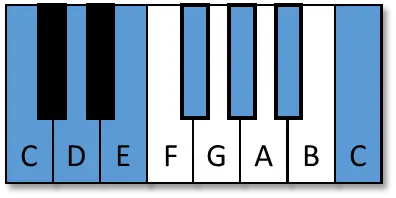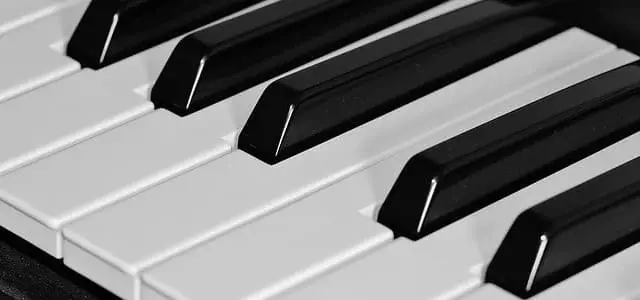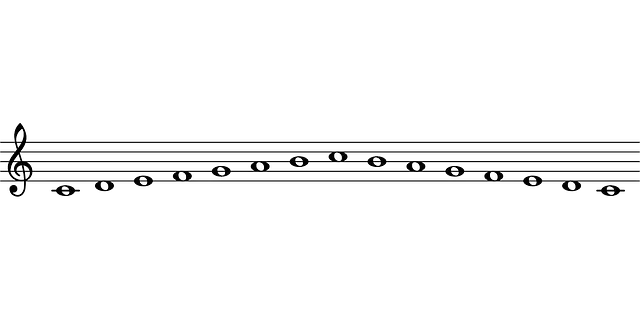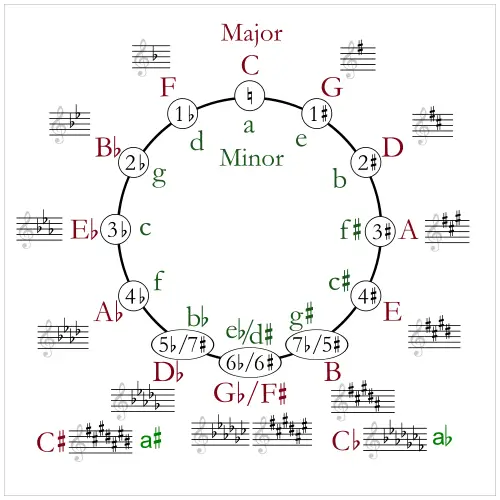- Home
- Piano Scales
- Whole Tone Scale
The Whole Tone Scale on the Piano
This article may contain compensated links. Please read the disclosure for more info.
A whole tone scale is a scale with only tones, or whole-tones.
Using only tones (also called whole steps) as in a whole tone scale, creates an open, airy sound without the feeling of major or minor since it uses no semitones (half steps) at all.
What is a Whole Tone Scale?
The whole-tone scale is an interesting scale that uses only whole tones (or whole steps).
A whole tone (tone) is together with the semitone, the two smallest intervals in western music tradition.
In other scales like major or minor, the "sound" is determined by the specific combination of whole tones and semitones.
The smaller interval of a semitone works as a «leading» interval since it has a sound of tension or dissonance. When leading to another note, it leads to a «resolution».
Being without any semitones, this is why a scale with only whole tones sounds so «open». It could lead to... anything!
 A Whole Tone Scale From C
A Whole Tone Scale From CTIP: As you continue to learn piano it's a good idea to get a great piano scale, chords and arpeggios technique book like this one: Basic Book of Scales Chords and Arpeggios.
How to Write a Scale with Whole Tones
Since you have to use only tones, you'll need to use accidentals (sharps and flats) when writing whole-tone scales.
Here is a scale with only whole tones starting from C.
 Whole tone scale from C
Whole tone scale from CThe notes used are C-D-E-F#-G#-A# and back to C.
This is 6 different pitches, so a tone scale is also called a hexatonic scale.
And here is another scale with whole tones starting from C#:
 Whole tone scale from C#
Whole tone scale from C#The notes used here are: C#-D#-F-G-A-B and back to C# an octave higher.
How Many Wholetone Scales Are There?
Since a whole-tone scale uses only tones and thus has all the pitches at an equal distance, it doesn’t really matter from what note you start. You can begin from any note.
So, in a way, there is only one whole tone scale, but you can start and end on any of the 12 different pitches.
But, in music theory, we say there are only two unique whole-tone scales. They are also said to be "complementary".
Why? Well, to be unique, they need to use different pitches.
So, if you start from C and make a whole tone scale, you’ll get the notes C-D-E-F#-G#-A# and back to C.
 Two white keys with a black key between, and vice versa is a whole tone.
Two white keys with a black key between, and vice versa is a whole tone.Now, if you start from any of those pitches; D, E, F#, G#, or A#, you need to use the exact same pitches again. So it’s not really different!
But, if we start from C# and make a whole-tone scale, you’ll get the notes C#-D#-F-G-A-B and back to C#. Now, these notes were not used before! (You could also start from D#, F, G, A, or B, of course. Still the same pitches.)
Since we have now used up all the 12 different pitches that exist, there is nothing left, to make another unique whole-tone scale with!
So, we have two «complementary» whole-tone scales, each using its own set of 6 different pitches, all a tone apart.
Whole Tone Music
Music using whole-tone scales was popular at the beginning of the 20th century.
Composers like Claude Debussy used them in for example «Voiles». Creating a soundscape of open harmonies and avoiding any sense of major or minor:





